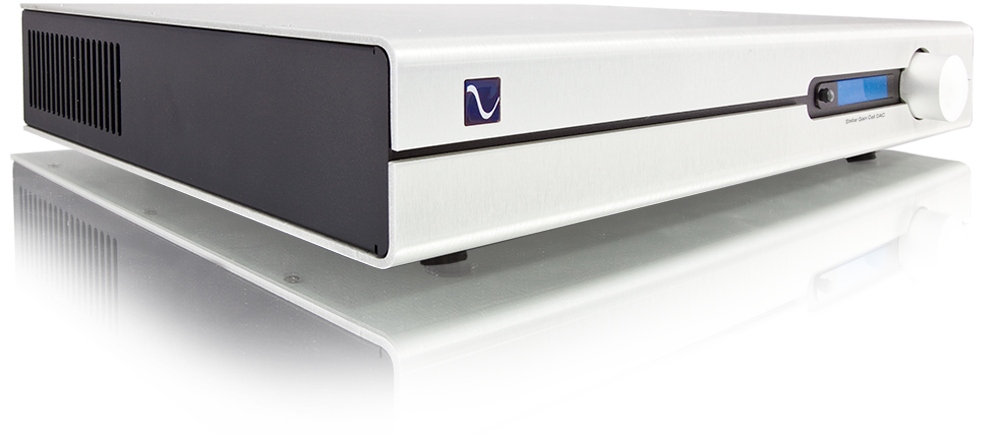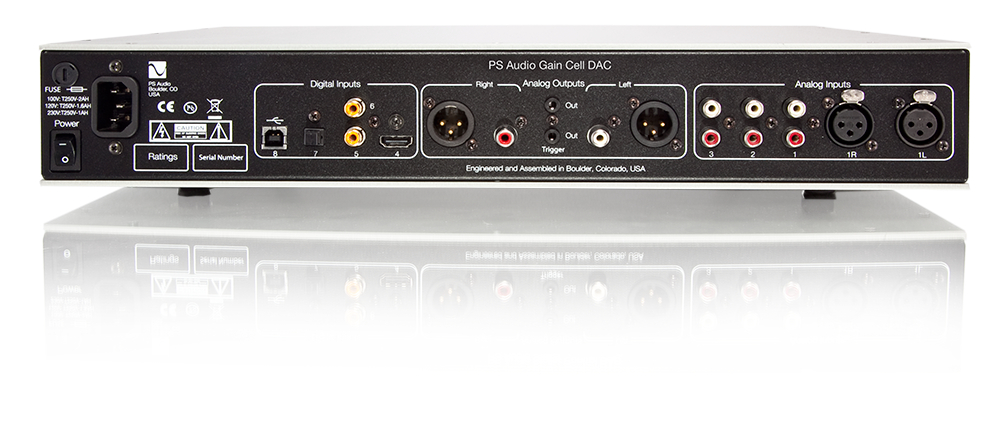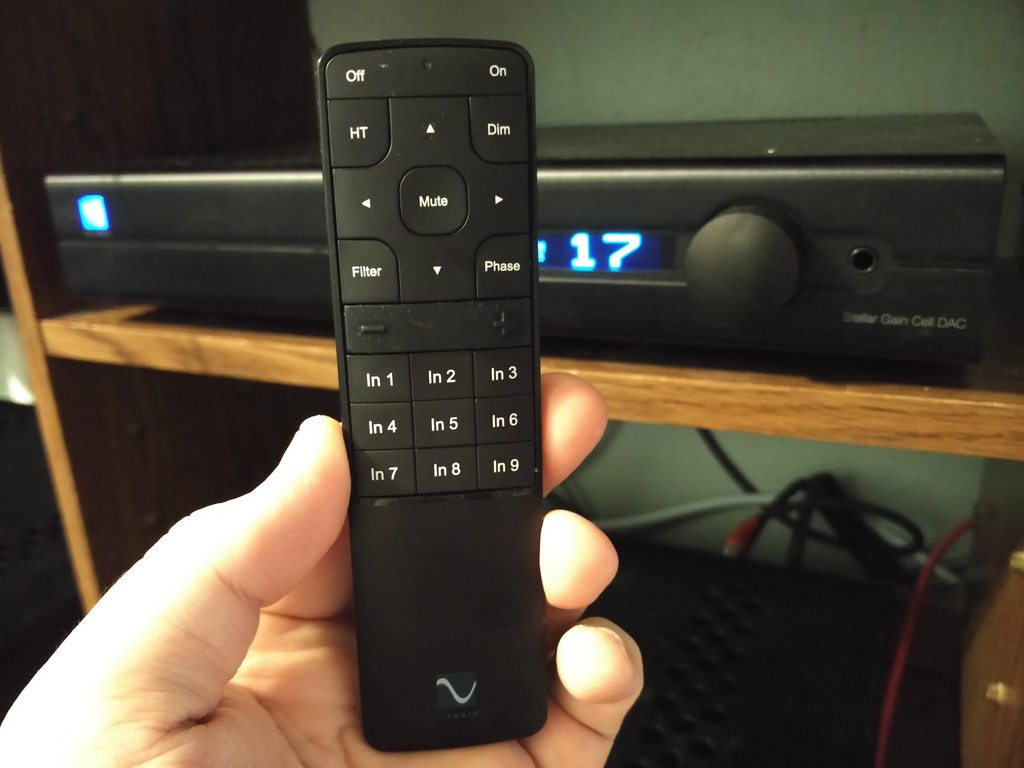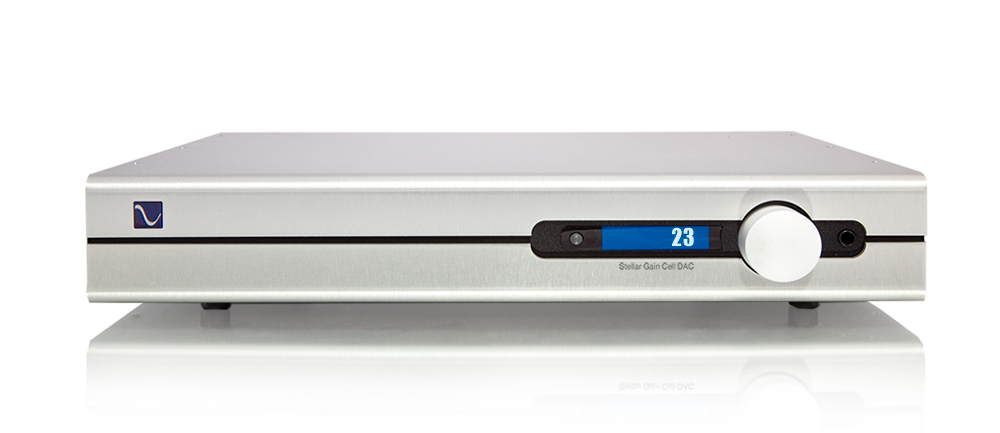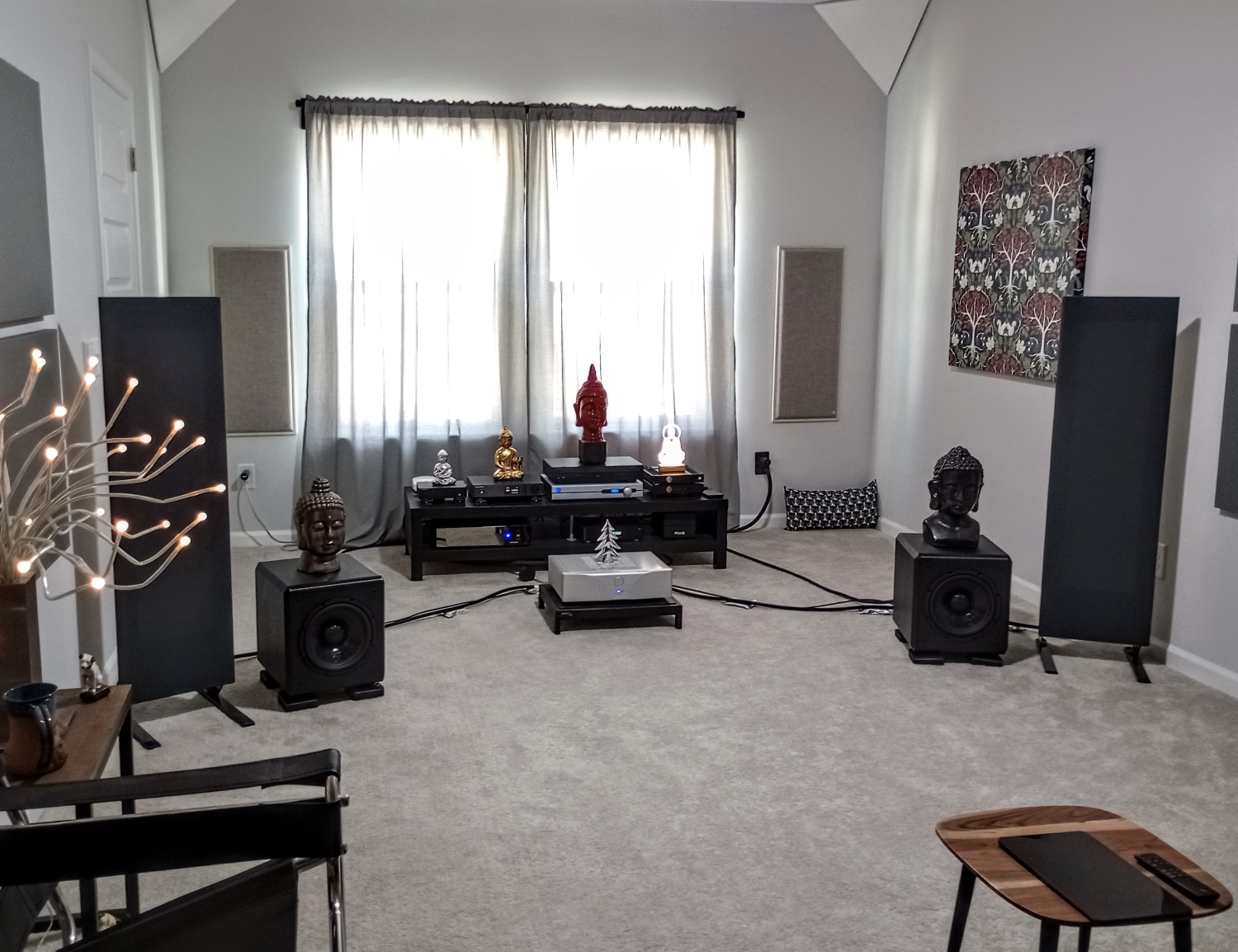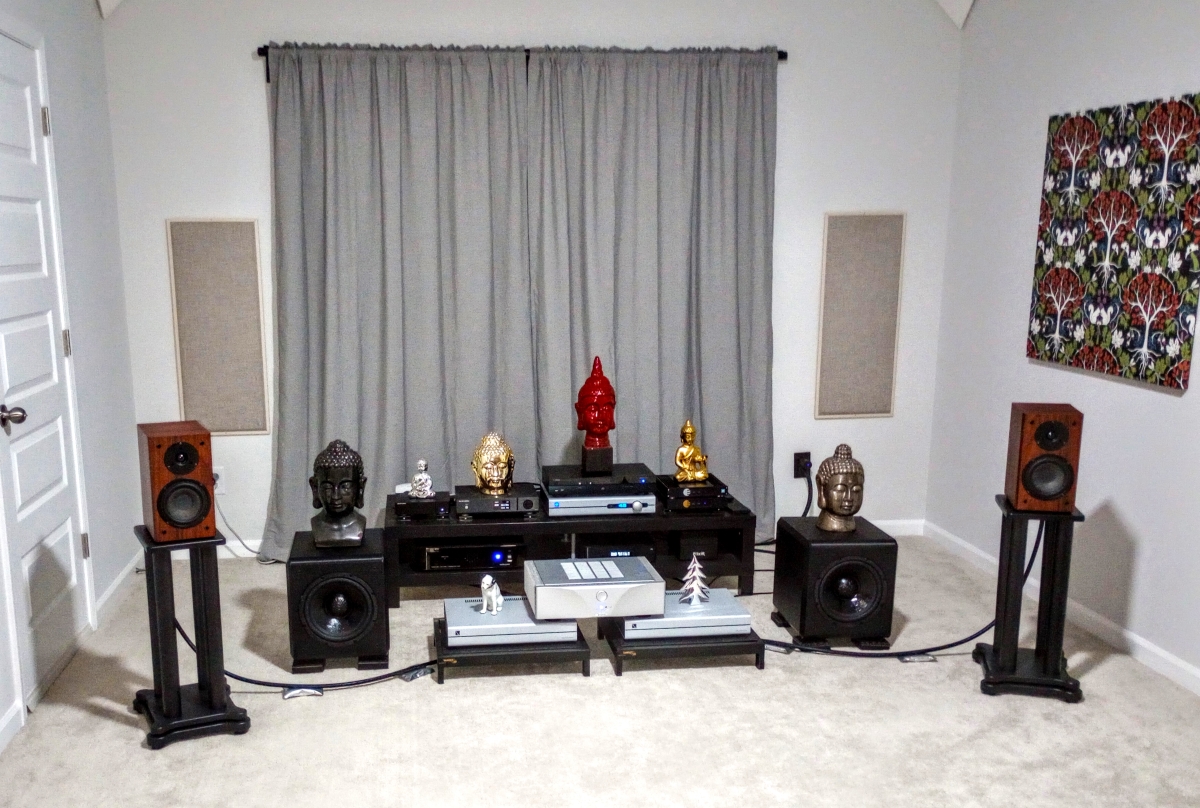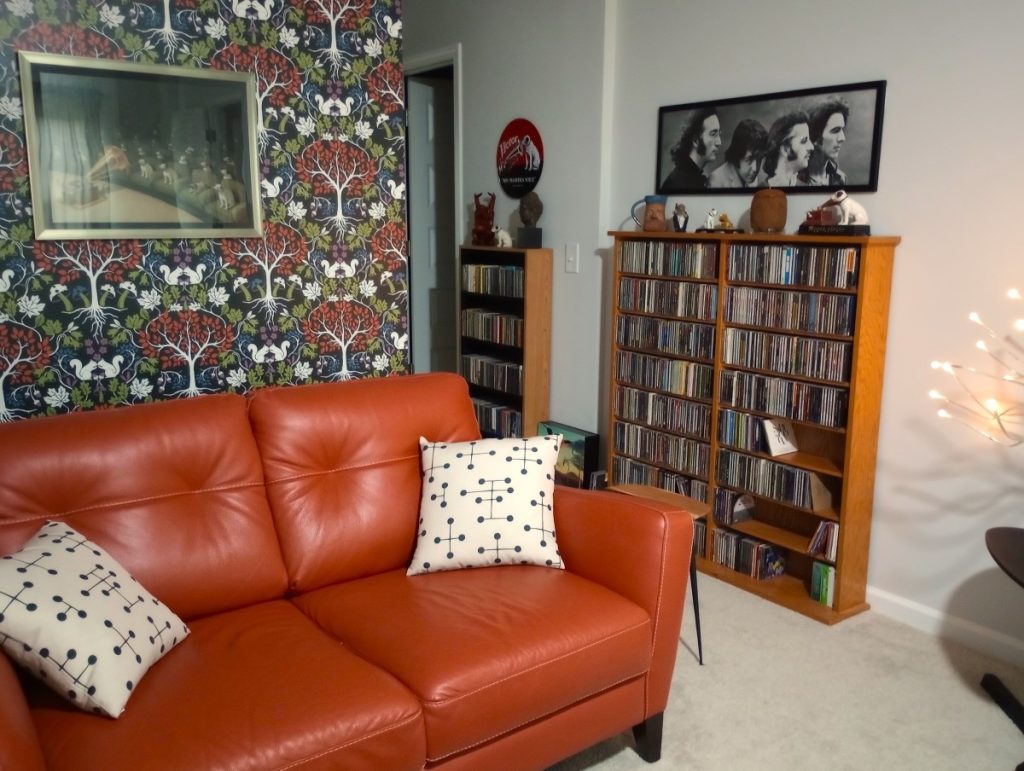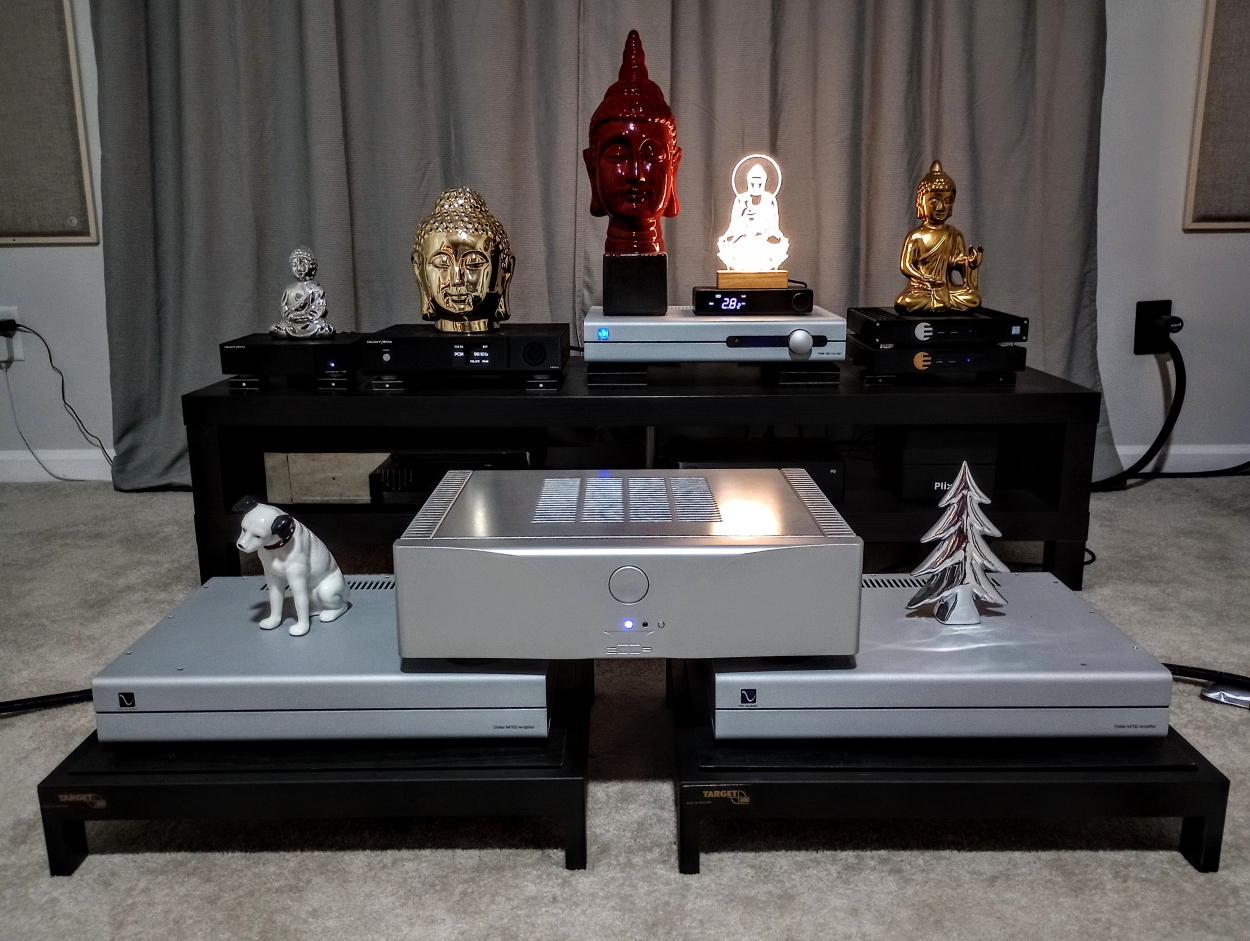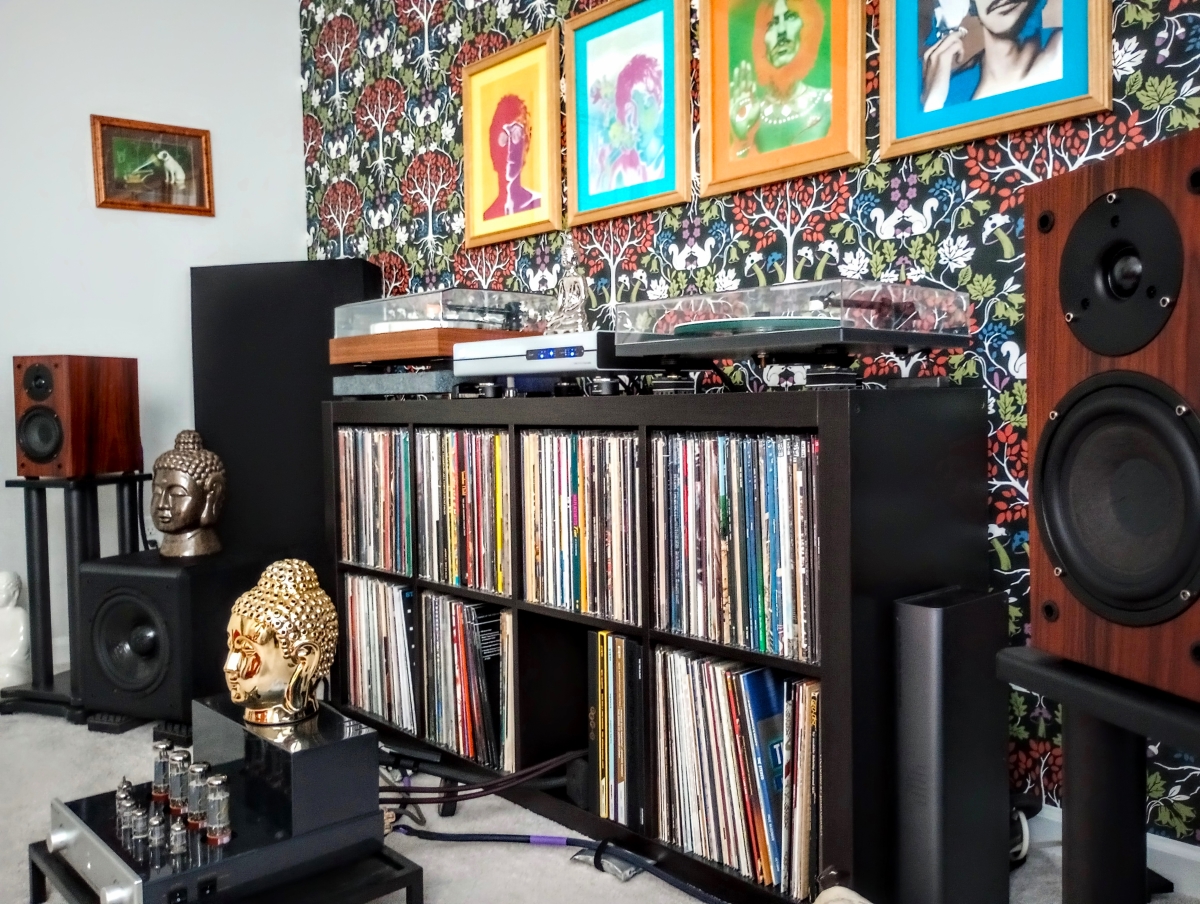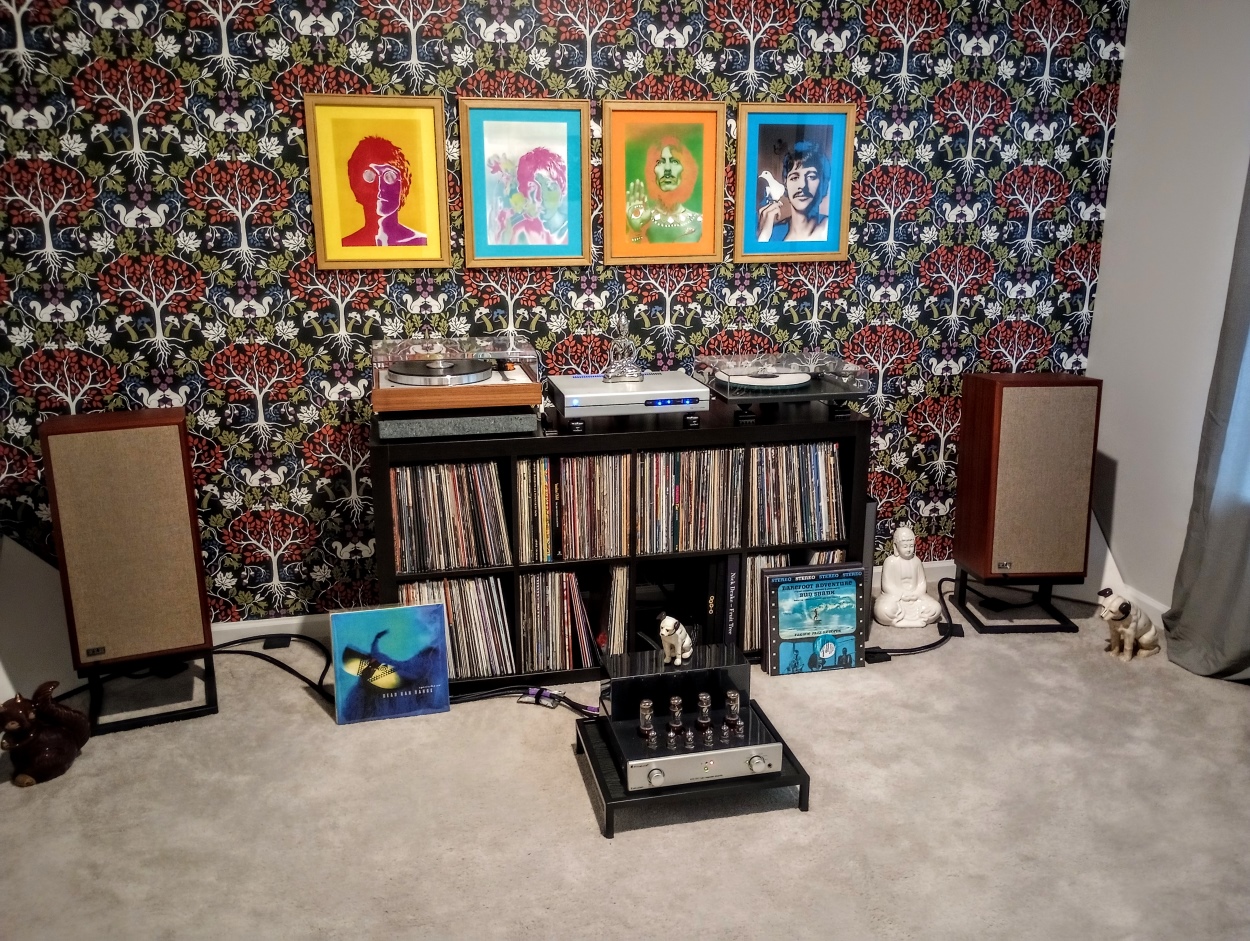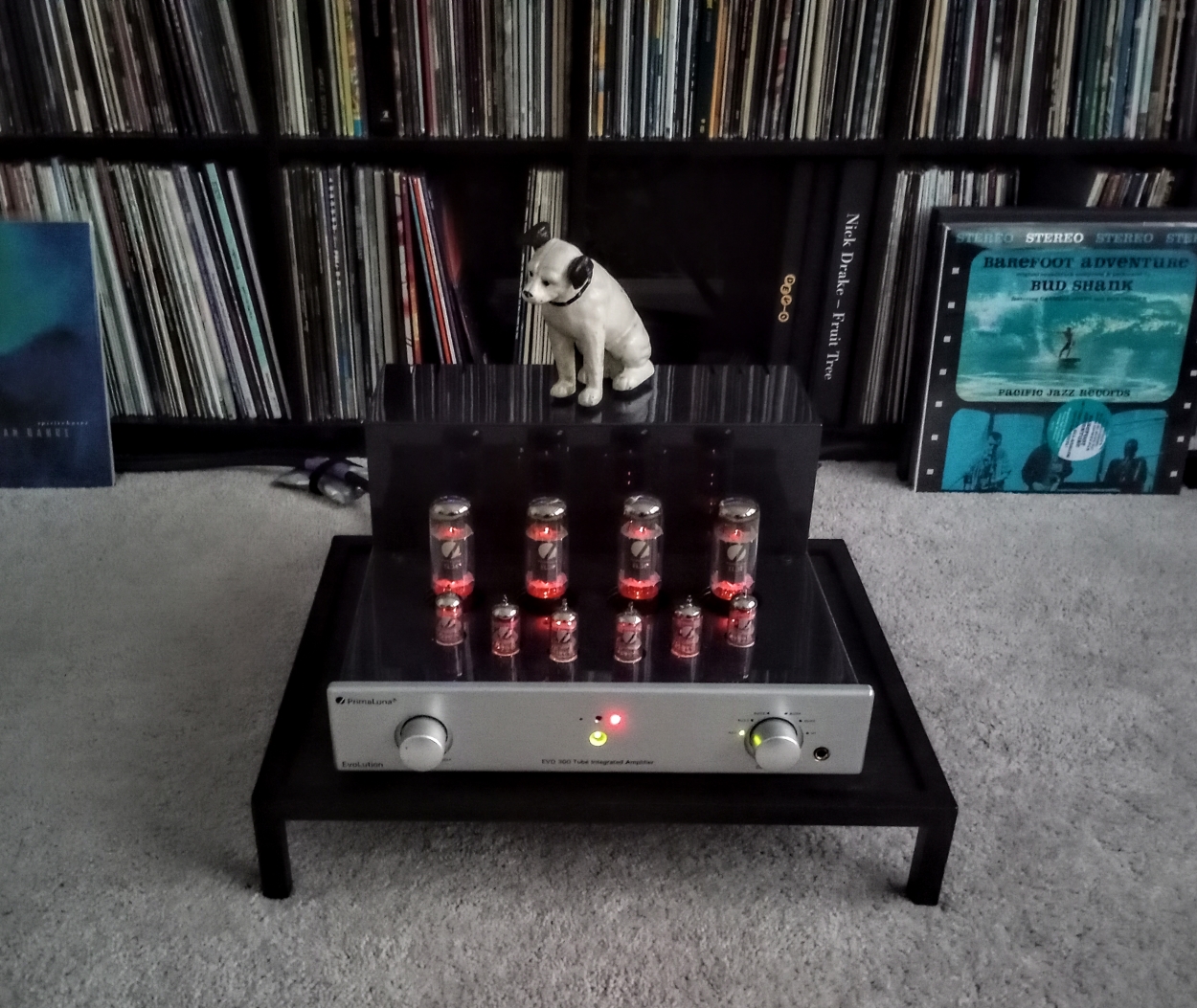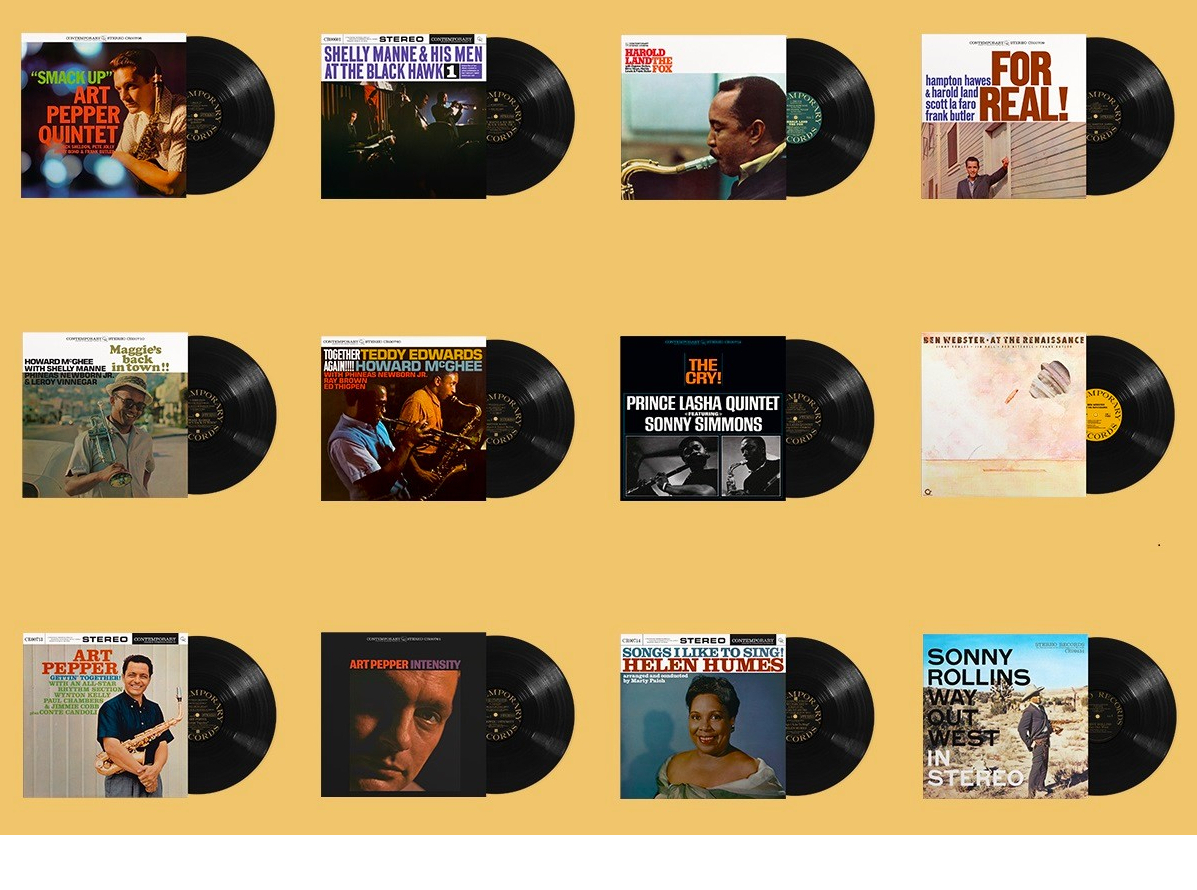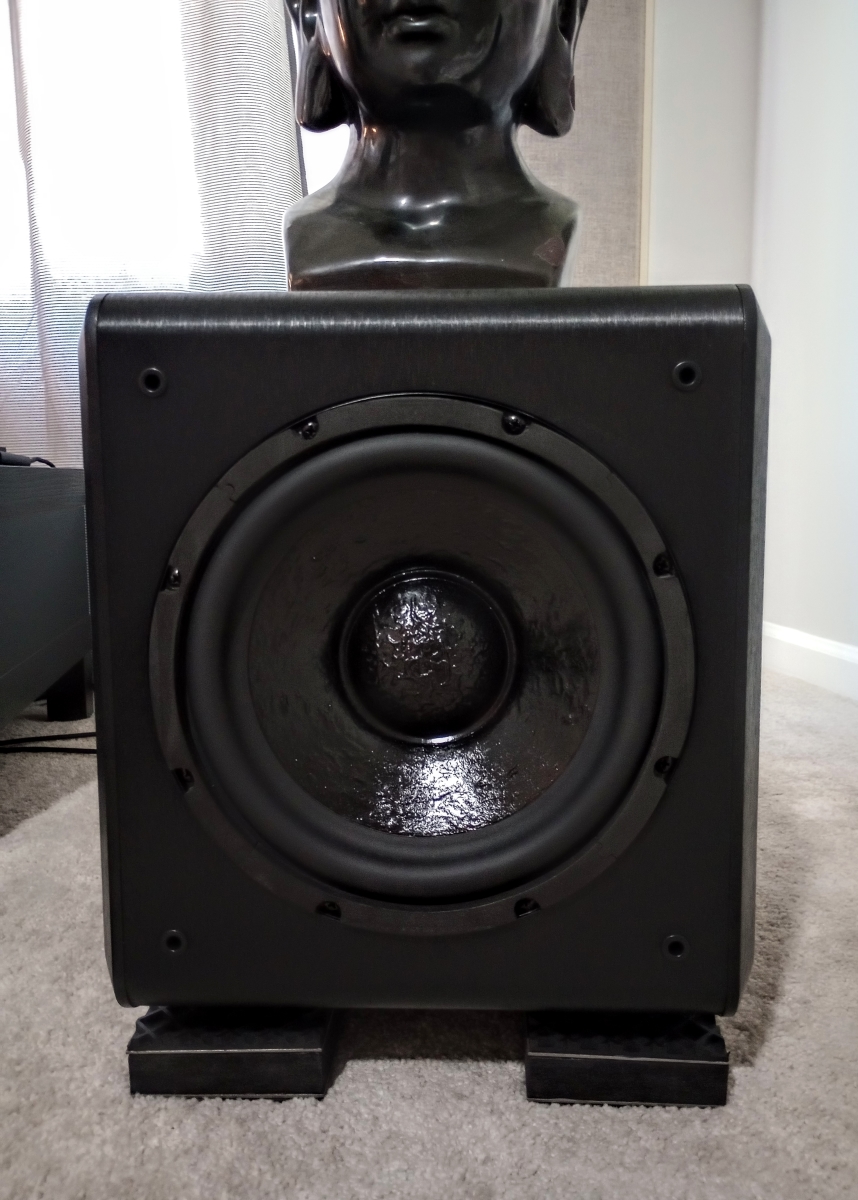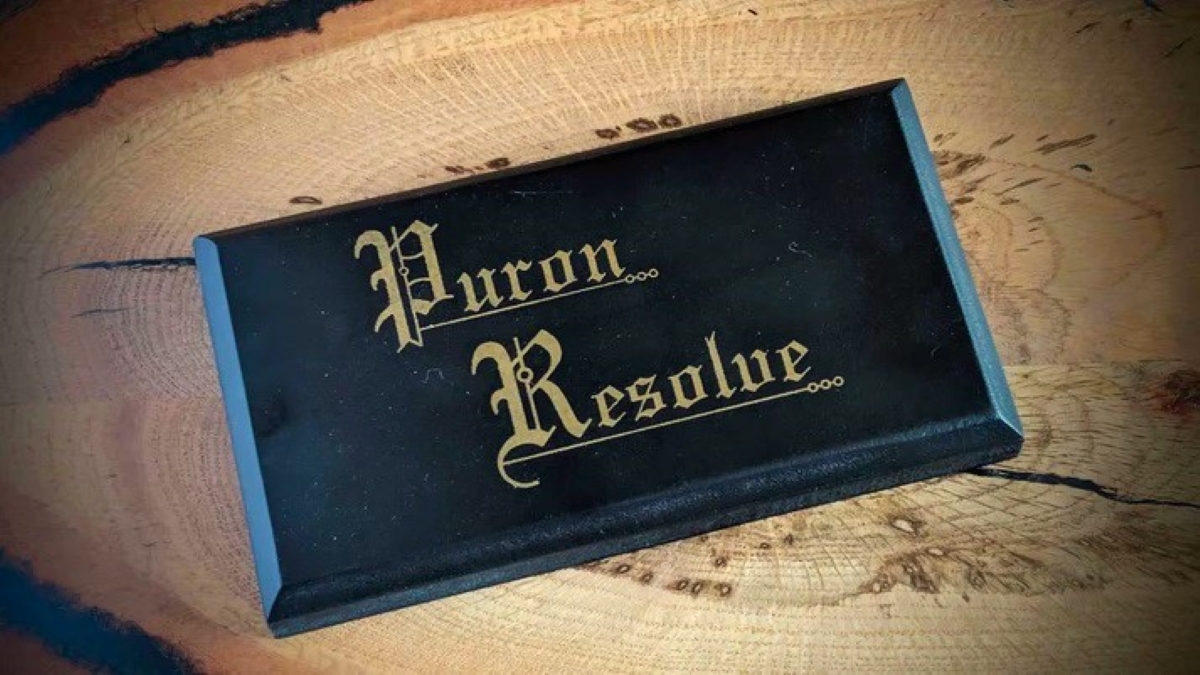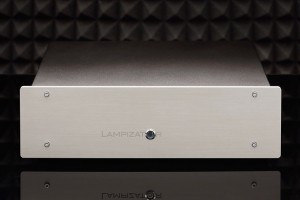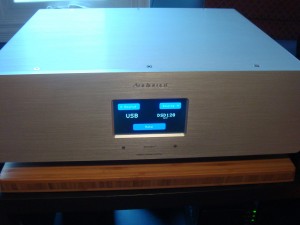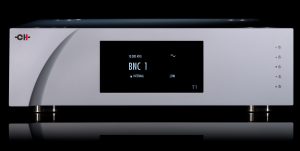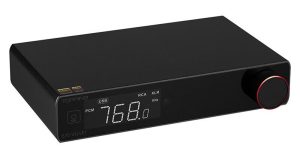Up until the arrival of the Stellar Gain Cell DAC a couple of months ago, my home system—while capable of producing some very satisfying music—was basically a cluster fu©k, with a mish-mash of two preamplifiers controlling all inputs. One for balanced (Luminous Audio Axiom II), a second one for single-ended (Acurus RL-11), and a constant ritual of flipping rear-panel amp switches to achieve the correct setup for the particular input. And with only limited remote functions, I always had to get out of the chair to tweak the volume. Once again, while very musically satisfying, nonetheless a complete pain-in-the-ass functionally.
I'd discovered the joys of balanced output a couple of years ago when I bought the Luminous Audio Axiom II balanced passive preamplifier—and it provided a perfect signal path from my balanced DAC output to the balanced inputs of my Emotiva XPA-1L Class A Mono Amplifiers. While I'd really like to have gone with a more traditional balanced preamplifier, there was next to nothing available for less than a grand, and the used market didn't prove promising either. The Luminous Audio unit was a real champ, and I couldn't fault its performance in any way, especially since probably 90 percent of my listening was via computer-based audio sources with the balanced outputs of my DAC connected to the passive preamplifier. For me, at the time, it was pretty much a match made in heaven, especially considering my budgetary constraints.
But when I moved into the new house in January, with a new dedicated listening room—with almost triple the cubic room volume of my previous setup—I started listening heavily to LPs again, and suddenly found the sound every bit as enchanting as I once believed it to be, but sooo much better than at the old place. The dual-preamplifier situation suddenly just about became darn-near intolerable. I started a serious hunt for a real, fully-functional preamplifier.
Enter the Stellar Gain Cell DAC
When the email arrived from Bill Leebens announcing the impending release of the Stellar line of equipment—I was pretty certain I'd found my system's new soulmate! When the Gain Cell DAC (GCD) arrived at the end of May, I gave it about 72 hours to burn in with various sources; from that point on, I was essentially glued to my listening chair for the next week or so!
The Stellar line of PS Audio equipment is designed to offer perfectionist performance at a considerably less than cost-no-object price point; the Gain Cell DAC combines a fully-functional, fully-balanced stereo analog preamplifier with an impressively high-performance Digital-to-Analog Converter, all at an MSRP of $1699 USD. The DAC circuit, while essentially based on the NuWave DSD circuitry, is all-new from the ground up, and includes some really impressive features that the NuWave DSD does not. First up: the GCD offers three choices of digital filters that allows the user to tailor the sound to his/her personal preferences—I find that one of them is usually the correct choice for whatever I happen to be listening to. You can easily cycle through the three filters with the press of a button on the stylized remote that controls all functions of the GCD. And while the complement of digital inputs on the GCD matches the NuWave DSD, there's one amazing distinction: the I2S input—if connected to one of PS Audio's DirectStream Memory Players—will allow you to experience the DSD stream from your library of SACD discs with no additional conversion of the stream. While I don't happen to own a DMP, and haven't heard this for myself, I have it on very good authority that the sound quality is almost beyond belief, elevating stereo SACD playback to a level most of us have always believed it to be capable of.
The GCD's performance as an analog preamplifier is nothing short of spectacular, either; it provides both balanced and single-ended inputs and outputs. And regardless of which input is selected, the balanced and single-ended outputs are continuously active, so you can feed a balanced signal to your amps from any input. There's one balanced analog input, and a complement of three sets of single-ended analog inputs; both the balanced input and primary single-ended input are controlled by Input 1. Only one source should be active at any given time with this input (how often, except when A-B'ing between sources would this even be an issue?), but it's great that you have the option of having both balanced and single-ended equipment connected to it. While I currently have nothing connected to the balanced input, my Rega P2 table is connected (via the Schitt Mani phono pre) to Input 1's single-ended jacks. Input 2 offers the connection to the stereo analog outs of my Oppo SACD player, and Input 3 is connected to my AudioQuest DragonFly Red DAC, via an AudioQuest Big Sur coax-to-3.5mm connector. The Input 3 connection provides Tidal Desktop MQA streaming from my laptop via the DragonFly Red—it's a total blast! And, of course, there's a complete complement of digital inputs as well—there's every digital input one could ask for. At this point, I'm only using Inputs 5 and 8; Input 5 (coax digital in) is connected to the coax out of the Oppo player. Input 8 (USB) is interchangeably connected to either the Sonore UltraRendu Network Streamer (with UpTone Audio's UltraCap LPS-1 power supply), or to JPLAY via my laptop.
Volume control with the GCD is also unique in my experience; the unit's output level is completely controlled in the analog domain by a Gain Cell (one for each channel), a proprietary device designed by PS Audio's Paul McGowan in the early 2000's. There are no mechanical elements—along with their potential for serious sonic degradation—present in the volume controller. The Gain Cell simply varies the gain in response to either the turn of the volume knob on the unit or the pressing of the volume buttons on the remote. And it's a functionally invisible process; the only way the Gain Cell calls any attention to itself is when you rapidly increase the volume with no source active, and you'll hear a sort-of light thumping in the background as the level elevates. However, when playing music, the volume function is not unlike that of any other perfectionist preamplifier.
The Stellar Gain Cell DAC is fully balanced from input to output, and is direct-coupled with no capacitors in the output signal path. There's a very useful Home Theater Bypass, if you system should require it (though I currently have no need for it, I found the lack of this very vexing in my previous home-theater based system at the old house!). On the digital side, the unit adds no sample rate conversion, and the digital output employs a high-current, Class A hybrid output stage. The DACs employ the ESS Hyperstream architecture, and the GCD also uses a passive output filter to lower transient distortion.
The GCD's display is somewhat minimalist; you always see which input has been selected, and what volume control setting you've chosen. The volume and input numbers are fairly large on the display, but everything else is pretty tiny—especially from across a 25-foot room. And when listening to digital sources, the display gives you the bit and sample rates of the file you're playing, and which digital filter you've chosen. And of course, you can see the current phase setting, if you've recently checked it out. You can also dim the display to your liking, and as you continue to listen, the display eventually goes dark. That's basically right up my alley; if I can't have the giant power meters I so loved in the seventies, then I might as well have total minimalism. And besides, I control almost all digital playback via some Android app, and you can usually find any information you might be looking for on your Android device's display.
Mother Nature's Fury
Just a few words about my current computer-based audio setup: I suffered a massive lightning strike at my new home in June, which basically took out all computer and network equipment (including my custom, hand-built home-theater PC), as well as some elements of my stereo setup. The DragonFly Red was killed (thanks, AudioQuest, for kindly offering a replacement!), along with the low-voltage power supply to one of my Emotiva amps. But the most painful loss was the Gain Cell DAC—yes, it was here for review, and the freakish lightning event damaged the USB audio input and some other internal circuitry. Hats off to Bill, Paul, and the gang at PS Audio for getting a replacement unit to me in very short order!
Prior to the lightning strike, and with my old system and network, I had been experiencing a tiny bit of noise when playing MQA files via the AudioQuest DragonFly. This was maddening to me, and everything I did to try and pinpoint the source completely eluded me. I contacted Gordon Rankin, the DragonFly's designer, to get his thoughts on the situation, and he was very candid with me. The source of all my problems was the PC; with all the individual power supplies involved in conventional PCs, it would probably be impossible for me to isolate the noise problem. He suggested that I get a laptop—he uses one himself—and that would eliminate any noise issues. While I thanked him for the advice, I basically bristled at the suggestion: I'd had pretty much nothing but unhappy experiences with laptops, and the fan and drive noise of a typical laptop was completely unacceptable to me in the listening room.
So with mother nature recently having forced my hand, I decided to take a leap of faith and go the laptop route. Besides, this would give me the opportunity to build bridges by hanging out with my wife some evenings, rather than being constantly downstairs on the computer or futzing with the stereo. Here once again, divine providence intervened: when I went to MicroCenter to pick out a new laptop, I ended up going with one that was just a tad more pricey than I intended to purchase, but had a more upgradeable RAM configuration with a slightly better-performing Intel processor as well. What I didn't realize, was that the laptop also had an internal M2 port for an additional SSD; so for about an extra $40, I was able to upgrade the RAM to 8 gigs, and for only an extra $100, I added a Samsung EVO 960 M2, 250GB SSD. I easily cloned the OS to the SSD, then upgraded the RAM and removed the 2.5 inch original drive, replacing it with another SSD I had lying about for additional storage.
Wow!! The laptop is now completely silent. Let me reiterate that for you: it's completely silent, as in a complete absence of any fan or drive noise, and it boots in eight seconds, with a read-write speed of 1787/1219! That's almost four times faster than a conventional SSD! Whereas the thought of a laptop previously horrified me to no end, it can now sit beside me in the listening room and absolutely calls no attention to itself in any way. The price tag for all this glory? Less than $500 USD. Unbelievable speed, no lag or delay of any kind, and absolutely no hiccups of any type during music playback. Gordon, how could I ever have doubted you?
Stellar Gain Cell DAC: Use and Listening
Functionally, when the GCD became fully integrated into my system, I thought I had died and gone to heaven! This is a seriously robust piece of kit: the fit and finish are simply beyond elegant, and I've even grown to love the understated remote, which I at first regarded as too tiny for my stubby fingers. I now find the embossed markings on the remote's buttons perfect for making source or volume changes in the low lighting I prefer while listening to music. Normal lighting: it's never an issue. There's also a phase button on the remote; while I've never been one to seriously question the phase of recordings, having the power to do so handily has led me to the discovery that some of my favorite albums are definitely out-of-phase! But the thing that I'm most impressed with is how very quiet the Gain Cell DAC is; there's no noise whatsoever when changing between sources, although I do reduce the volume before switching from Input 1 (my phono pre). The lowish output of my Denon cart requires a bit of additional gain, so I don't want to cause anyone any consternation when switching to a digital source from a spinning LP.
Since I'd been experiencing a bit of a problem listening to MQA files via Tidal and the DragonFly Red (prior to the lightning strike), I pretty much immediately wanted to check out the sound via the new laptop and the GCD. To my great relief, there was no hum or noise of any kind, and another problem I was having was immediately solved as well. The software-driven version of MQA is only currently available via Tidal's Desktop—unless, of course, you have a DAC that decodes MQA. With the previous HTPC—which was located in an adjacent room—my options for Tidal playback were limited. The only way I could listen to a full-blown MQA stream through the DragonFly (an MQA renderer) was to create a playlist on the Tidal desktop, start playback, then race the forty-plus feet to my listening position—hopefully before the music started. Thankfully, with the new setup, that is no longer an issue!
While the whole MQA aspect with the Stellar GCD essentially only involves gain control, the GCD makes it so very easy for me to switch between sources and make judgements about how I think certain formats sound when compared to each other. Since it's only me, I get to be judge, jury, and executioner for MQA, and at this rather early point—the jury's still out. The value I currently find with Tidal and MQA is the ability to check out MQA Master recordings that—for example—I don't own, or own on vinyl only. A really good example is Crosby, Stills, and Nash's CSN, a 1977 album that, at the time, I virtually ignored, choosing instead to listen to prog-rock groups like Yes, King Crimson and the like. And I was only beginning to discover groups like the Clash, Ramones, and Devo, all of which were completely counter to the much more mainstream CSN. When a friend of my wife's was relocating to Pittsburgh, she gave me a couple of boxes of LPs (several hundred, actually, mostly in pristine condition) that included a really clean pressing of CSN. Since my recent vinyl renaissance, I've been sorting through these albums, cleaning and playing them—and made an amazing discovery: how in God's name did I miss this album way back when? A nearly perfect album, it's almost entirely ear candy, especially when played through the GCD, which has the best analog output section of any preamplifier I've ever owned, bar none. The LP is miraculous, but via the MQA Tidal Master, it sounds pretty darn good too! Maybe not better than the LP, but then, I haven't been able to compare it to the standard CD-quality version yet. I need to quit my day job, so I can focus on listening to a lot more music! And the GCD makes source comparisons as easy as pressing a button with my stubby little fingers!
When listening to digital sources, I most often listen via the GCD's USB input with JPLAY on the new laptop; I also employ the Fidelizer Pro software, both of which work to minimize unnecessary OS background processes to provide a much cleaner playback environment. The sound quality is superb, and the GCD's DAC really shines with playback of files sourced from every level of DSD or PCM. I've owned PS Audio's NuWave DSD for two years; it was designed to improve upon the original NuWave DAC by adding DSD playback, along with improving your experience with CD-quality files. I didn't think it could get much better at the price point than the NuWave DSD, but the GCD easily surpasses it, and the ability to apply meaningful digital filters is a real plus. The JPLAY/Fidelizer Pro combo is my go-to music player, and approaches the very best in digital playback.
But in terms of the ultimate in digital playback, I'd have to give the nod to another new toy, the Sonore UltraRendu Network Streamer, used in combination with UpTone Audio's UltraCap LPS-1 linear power supply. Streaming—which is available via PS Audio's Bridge on their higher-tier gear—is where all the buzz currently is in computer-based audio, and streaming lifts the level of playback significantly. I use this combo in a variety of ways to stream the music: most frequently Roon, which not only allows you to access your library of digital files over your network, but also allows you to stream from Tidal. Roon is great, but not perfect: you still can't stream full-res MQA via Roon.
The UltraRendu also allows you to use Open-Source applications for both PC and Android to stream your music library via DNLA. I currently use both Bubble DS and MinimServer to access my music library via my Android phone; the combo helps turn my phone into a very elegant remote that offers nearly limitless options for playback and playback scheduling. And once again, the information at your fingertips is just about boggling.
With the UltraRendu/UpTone combo in place and playing through the Stellar GCD, I honestly think that the number of systems that can approach this level of clarity, transparency, and musicality are few and far between. PS Audio's upper-range systems are impressively good—a quick trip to the web will easily bury you with testimonials to the power and majesty of their DirectStream and DirectStream Jr. offerings—but they're also considerably more expensive than the GCD. At the Stellar Gain Cell DAC's price point, it's obvious that the apple doesn't fall too far from the tree!
Let's not forget CDs and SACDs!
I have an Oppo disc spinner—it's not the latest and greatest, but offers surprisingly satisfying playback of CDs and SACDs via the Gain Cell DAC. I have the Oppo's single-ended outputs connected to the GCD's Input 2 for playback of SACD, and it sounds as good or better to me than any of the various Sony units I've owned over the years. It especially sounds great when you consider that I bought this Oppo at a Goodwill for nine bucks—it even had the remote—after my son-in-law (wonderful boy!) dropped and smashed my then current SACD player on the street during the move into the new house. While I'll probably never have the capability to hear a pure DSD stream via the GCD's I2S inputs, it's nonetheless reassuring to know that it's there if I ever win the lotto!
With CDs, I take a slightly different approach—I have the coaxial digital out of the Oppo connected to the GCD's Input 5 coax digital input, using the Oppo as a transport only. While I've become totally enamoured of the CD rips that populate my music library, actual CDs also sound every bit as great when decoded by the GCD's internal DACs. And you can employ the GCD's digital filters with all your CDs—there's always one that improves the sound immeasurably. A really great compare/contrast here is the Thelonious Monk album Straight, No Chaser on Columbia—the SACD was one of the first ever released, and sounds really great via the Oppo's analog outs into the GCD, and it mirrors the original LP's content. But the CD was remastered long after the SACD's release, and much of the music that had been edited out for the original album release way back when has been restored. One of the album's signature cuts, "Japanese Folk Song," clocks in at 11 minutes on the LP and SACD. On the remastered CD version, it clocks in at over 16 minutes, and with the GCD's Filter 1, sounds pretty darn close to the SACD version!
Conclusions
I seriously still can't totally process how very nice it is to not have to get off my ass and flip all those damn switches, just to change volume or sources! And it always seemed to me that I was experiencing slightly less than perfectly pristine playback in my previous system: with the GCD, everything is completely transparent. In fact, for me, that's its greatest strength: the Stellar Gain Cell DAC allows you to seamlessly, transparently switch between sources, increase gain, and make meaningful sound adjustments, all the while calling zero attention to itself. This unit is not merely a DAC with a volume control: it's the ideal analog preamplifier, and the fact that it includes PS Audio's idea of trickle-down engineering in the form of an affordable, nearly world-class, budget-friendly DAC is the icing. While the NuWave DSD was no slouch, and acquitted itself very nicely, it retailed for $1299 USD. At only $1699 for the GCD, you come very close to getting the whole tamale, which tastes a whole lot like PS Audio's DirectStream offerings, and at a greatly reduced price point from those flagship devices. The GCD is a keeper—it comes very highly recommended!
PS Audio Stellar Gain Cell DAC/Preamplifier
MSRP $1699
PS Audio
All images courtesy of PS Audio




